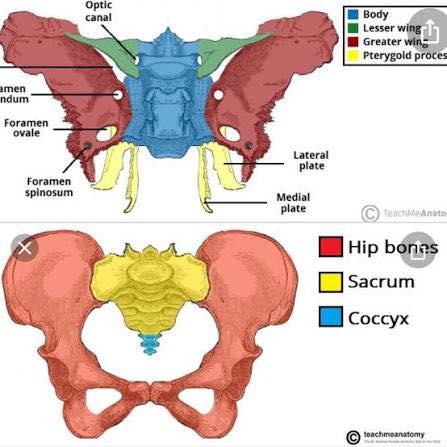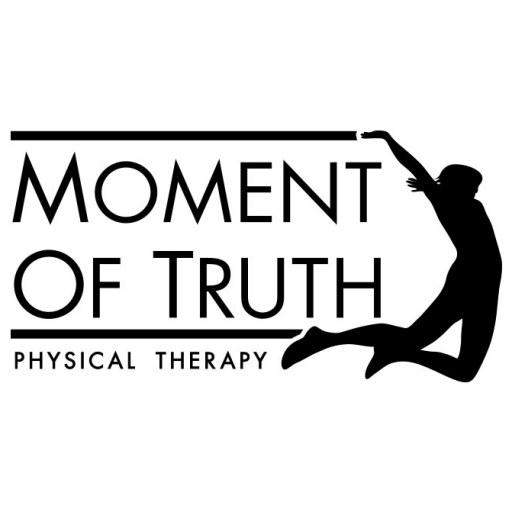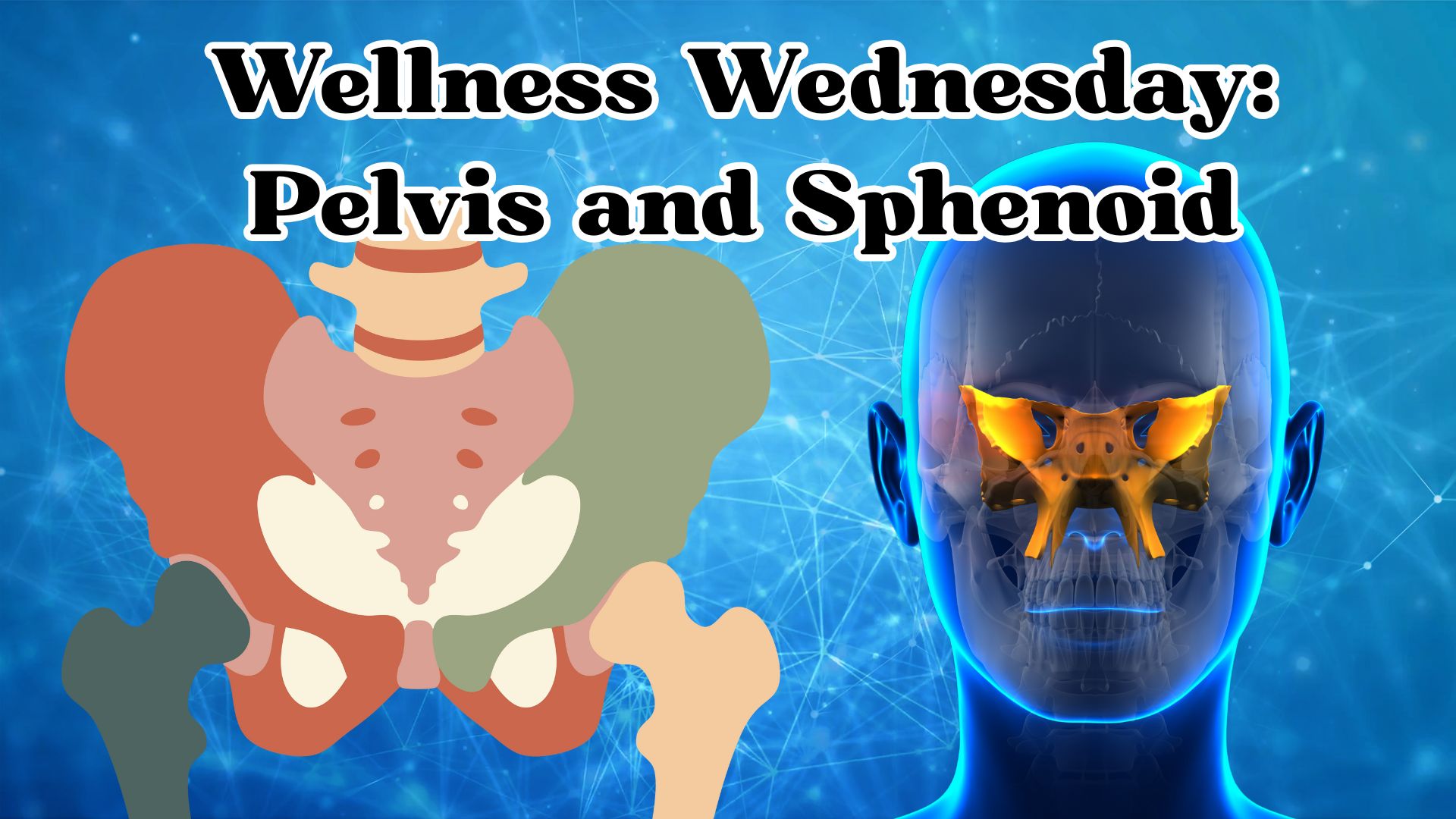| What are the similarities between your skull and pelvis? Hopefully last week prepped you for the continued mystery and magic of our amazing anatomy! |
| I couldn’t fit all this awesome information into 1 email so here is part 2 of skull mirrors the pelvis! The sphenoid bone is one of the most fascinating and important bones in the human body—often called the “keystone” of the skull because it articulates with almost every other cranial bone. The sphenoid and the sacrum are like mirrors. Each is a keystone, each balances paired structures, and each protects life-giving centers (pituitary above, reproductive below). They’re linked by motion, membranes, and meaning—reflecting how our body is one continuous, living system. |

| 🧩 Structural Importance of the sphenoid • It forms part of the base of the cranium, contributing to the floor of the skull and providing stability. • Because it touches nearly all other cranial bones, it helps hold the skull together, like the keystone in an arch. • The pelvis also forms a bowl and arches that distribute forces 👁️ Anatomical Contributions • Houses the sella turcica, a saddle-shaped depression that cradles the pituitary gland—a master gland of hormones – think about how much we blame on our hormones when this could be a key factor! • Forms part of the orbit of the eye, helping protect vision structures. • Its shape includes wings and pterygoid processes, which provide attachment points for muscles of chewing and jaw movement. • It mirrors the pelvis in both appearance and rotational torques, meaning both need to be addressed for lasting balance 🧠 Neurological Significance •Several key cranial nerves pass through openings in the sphenoid: Optic nerve (II) through the optic canal. Oculomotor (III), Trochlear (IV), Trigeminal (V1), and Abducens (VI) through the superior orbital fissure. This makes it central to vision, facial sensation, and eye movement. The pelvis has all the nerves of lower spinal cord that go down into the legs as well as nerves to our pelvic organs and structures 🌬️ Respiratory & Circulatory Relevance • The sphenoid bone is pneumatized – which means has air that supports it’s structure – it contains the sphenoidal sinuses, which lighten the skull and connect to the nasal cavity. • The pelvis mirrors the diaphragm when it comes to breathing 🌿 Clinical & Holistic Significance • Dysfunction or trauma affecting the sphenoid can lead to headaches, vision changes, and hormonal issues (due to pituitary involvement). • In osteopathy and craniosacral therapy, it’s often considered a “primary mover” of cranial rhythm—imbalances here can ripple through the entire body. • The sphenoid and pelvis are literally connected from the skull down the spine to our base |
| Put simply – this is why I often check that pressure from the top of your head down into the body and why we will be doing more cranial and throat checks as I’ve always believed it’s critical to treat the whole body and why myofascial release is at the heart of everything I do. True health and lasting results require nothing less! When the keystone at the top and the keystone at the base are in harmony, the whole system flows with balance, rhythm, and vitality. This is critical aspect of why we are committed to treating the WHOLE body! Hit reply and let me know your thoughts on this! Much love and gratitude, Amy and MOT team |


0 comments